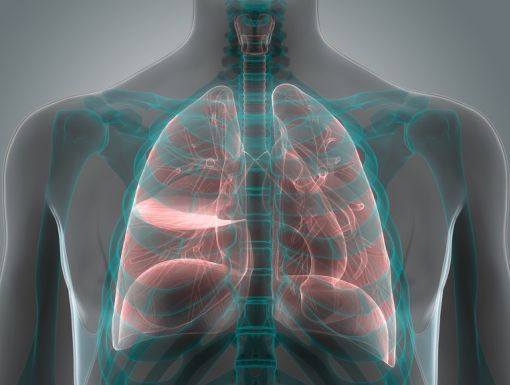
Is Vaping Safer Than Smoking?
Have you noticed people “smoking” in places where traditional cigarettes have long been banned, like malls or restaurants? They’re likely using e-cigarettes, commonly known as vapes. These battery-powered devices heat a liquid that often contains nicotine (and sometimes other substances), turning it into an inhalable aerosol. While vaping may look different from smoking, it’s not without its own health risks.
One of the most common reasons people turn to vaping is under the impression that it’s “safer” than smoking. Unfortunately, that’s far from the full story. While vaping might not produce the thousands of harmful chemicals found in cigarette smoke, its aerosol still contains a blend of substances that have their own risks, including some that are toxic to your body. Here’s
What are you inhaling when you vape?
- Heavy metals like nickel, lead and cadmium. These can build up in your lungs and cause long-term damage.
- Ultrafine particles penetrate deep into your lung tissue, potentially causing inflammation and scarring.
- Cancer-causing chemicals, even in vapes labeled as "nicotine-free."
Additionally, vape liquids often include flavoring agents like diacetyl, which has been linked to “popcorn lung,” a rare but serious lung disease that causes inflammation and scarring of the small airways (bronchioles) in the lungs. This is a serious and irreversible respiratory condition.
It's not just the vaper who’s at risk. Secondhand exposure to vape aerosols isn’t harmless. Non-smokers, including children and pregnant women, can still breathe in these harmful chemicals if they’re near someone vaping.
While more studies need to be done on the full long-term effects of vaping, early research points to issues like lung scarring, weakened immune function and chronic respiratory problems. The evidence is clear: vaping is not a harmless alternative.
Can vaping help you quit smoking?
For many smokers, vaping may feel like an easier step down from cigarettes. But is it an effective quit-smoking tool? The answer, according to research, is complicated.
The issue with "dual use": Some smokers use vapes alongside traditional cigarettes, a practice known as dual use. This can actually prolong nicotine addiction rather than reduce it. Instead of quitting completely, users find themselves dependent on both products, exposing themselves to the risks of both smoking and vaping.
Lack of strong evidence: Unlike FDA-approved quit aids, such as nicotine patches, gum or lozenges, and prescription medications like Chantix or Wellbutrin, vaping hasn’t undergone the rigorous testing needed to prove its effectiveness or safety as a quit-smoking tool.
If you’re ready to stop smoking, professional smoking cessation programs are your best bet. These programs combine evidence-based tools with personalized support to give you the highest chance of success.
Why are young people vaping more?
According to the Centers for Disease Control and Prevention, in 2024, e-cigarettes were the most commonly used tobacco product among middle and high school students in the United States, with 1.63 million (5.9%) students currently used e-cigarettes.
One reason vaping has gained so much popularity among teens and young adults are due to slick marketing campaigns, fruity flavors and trendy devices have made vaping especially appealing to younger generations. But this rise in youth vaping has consequences.
Nicotine is highly addictive, and exposure during adolescence can disrupt brain development, potentially leading to issues like memory problems or impulse control later in life. According to the CDC, most e-cigarettes contain nicotine, even those that claim to be nicotine-free.
It’s not just about addiction, though. Many teens who start vaping eventually transition to traditional cigarettes, undoing decades of progress in tobacco prevention.
What can you do to prevent your teen from vaping?
If you find out your teen is vaping or you are worried they may start, follow these tips to help prevent vaping from becoming a regular habit.
- Explain the health risks of using e-cigarettes. Some kids may not know that their e-cigarette always contains nicotine. Make sure your child is aware of the health risks and addictive habits that come with using e-cigarettes.
- Keep an open dialogue. Start conversations with your child early and continue to have open and honest talks as they get older. The CDC has a “Talk With Your Teen About E-cigarettes” tip sheet for parents. Use this as a guide when you have the talk with your children about the dangers of e-cigarettes.
- Kick your tobacco habits. Children learn from example. If they see you smoking or using e-cigarettes, they are more likely to use it themselves. At the very least, do not smoke around your children.
- Teach your children about peer pressure and how to say no. Help them develop a script of what they might say if a friend offers them a cigarette or e-cigarette.
- Learn when you need help. If you notice your teen is vaping and you are unable help kick their habit, you should seek professional help. Talk with your Ochsner pediatrician or internist about available smoking cessation programs.
What are the best steps to quit vaping?
Whether you’re vaping, smoking or doing both, there’s no better time to quit than right now. The important first step is finding the right resources. Support makes all the difference. Professional help is available through Smoking Cessation Programs, which offer a combination of:
- Expert guidance tailored to your quitting goals.
- FDA-approved treatments, like nicotine replacement therapy.
- Behavioral support, providing tools to manage cravings and triggers.
Consider the benefits of quitting, such as:
- Improved respiratory and cardiovascular health.
- Reduced risk of severe illness, including cancer and chronic lung disease.
- For younger adults, a healthier start on your long-term health and well-being.
Small changes lead to big wins, and every day you stay smoke- and vape-free brings you closer to a healthier future.
How can Ochsner help you quit vaping?
The rise of vaping has introduced a new set of challenges in the fight against nicotine addiction. While marketed as a less harmful alternative to smoking, the hidden dangers of vaping are becoming increasingly obvious. For those using it as a way to quit cigarettes, the path to a healthier lifestyle often requires more reliable tools and support systems.
At Ochsner Health, we are committed to helping people take control of their health. Our Smoking Cessation Program provides the resources you need to escape nicotine dependency for good. Take the first step today and discover the freedom that comes with living smoke- and vape-free.
Your health is worth it. Your future is worth it.



